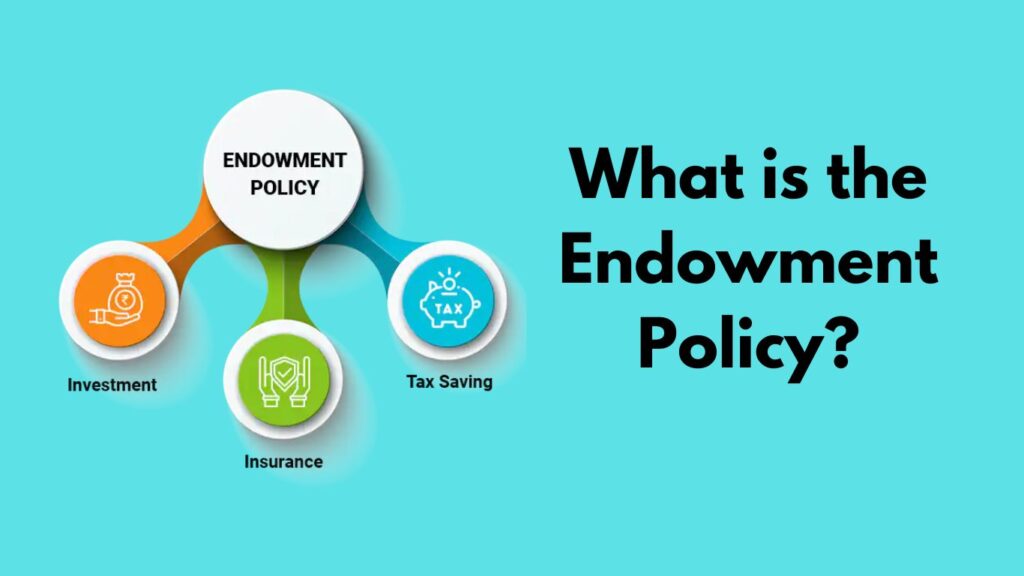In the world of financial planning, it is important to have a comprehensive understanding of the different investment options. One such option is an endowment policy, which can be a valuable tool for long-term savings and investment growth. But what exactly is an endowment policy and how does it work?

Definition and Explanation of Endowment Policy
An endowment policy is a type of life insurance policy that combines insurance coverage with a savings component. It offers a lump sum payment to the policyholder at the end of a specified term or on the death of the policyholder, whichever is earlier. This payment is called an endowment benefit.
The primary purpose of an endowment policy is to provide financial security and stability for the policyholder and their beneficiaries. It offers a combination of insurance and investment, making it an attractive option for those who want to grow their wealth while protecting their loved ones.
Features and Benefits of Endowment Policy
Endowment policies come with a number of features and benefits that make them attractive to investors. Some of these include:
Long Term Savings: Endowment policies are designed for long term savings. By committing to making regular premium payments over a fixed period, policyholders can accumulate a significant sum that can be used for various financial goals, such as education expenses, retirement planning, or purchasing a home.
Guaranteed payout on maturity: Unlike other investment options, which are subject to market fluctuations, an endowment policy offers guaranteed payout on maturity. This gives peace of mind to the policyholder, knowing that their investment is safe, and they will get pre-determined returns.
Tax benefits and exemptions: In many countries, endowment policies come with tax benefits and exemptions. Policyholders may be eligible for tax deduction on premiums paid and tax-free growth on the investment component of the policy. These tax benefits can help policyholders maximize their savings and investment returns.
How does an Endowment Policy Work?
To understand how an endowment policy works, let’s explore its key components and mechanics.
Premium: Policyholders are required to pay regular premiums during the entire policy term. These premiums can be paid monthly, quarterly, half-yearly or annually, depending on the policy and the policyholder’s preference.
Allocation of funds: The premiums paid by policyholders are divided into two parts – one part goes towards insurance coverage, while the remaining part is invested by the insurance company. The investment component of the policy is managed by the insurance company, with the goal of generating returns and growing the policyholder’s investment.
Maturity and payout options: At the end of the policy term, the policyholder is entitled to the endowment benefit, which is a lump sum payment. Alternatively, if the policyholder dies during the policy term, the named beneficiaries will receive the endowment benefit. Policyholders may also have the option to surrender the policy before maturity, but this may attract surrender charges and penalties.
Types of Endowment Policies
There are different types of endowment policies available in the market, each with its own unique features and benefits. Some common types include:
Traditional Endowment Policies: These policies offer guaranteed maturity benefits as well as bonuses that may be declared by the insurance company based on their performance. They offer a conservative investment approach and are suitable for risk-averse individuals.
Unit-linked endowment policies: These policies allow policyholders to choose the investment fund where their premiums will be invested. The returns of these policies are linked to the performance of the chosen investment funds, making them suitable for individuals who are comfortable with market fluctuations.
With-profit endowment policies: These policies offer policyholders a share of the insurance company’s profits through bonuses. Bonuses are declared based on the investment performance of the company and are added to the maturity benefit.
Low-cost endowment policies: These policies have lower premiums than other types of endowment policies. They are designed for individuals who want the benefits of an endowment policy but have budget constraints.
Benefits of Endowment Policies
Endowment policies offer several benefits that make them an attractive investment option. These benefits include:
Long-term savings and investment growth: By committing to regular premium payments, policyholders can earn a substantial amount of money over time. This makes endowment policies an effective tool for long-term savings and investment growth.
Guaranteed payout on maturity: Unlike other investment options that are subject to market fluctuations, endowment policies offer guaranteed payout on maturity. This provides financial security and peace of mind to the policyholders.
Tax Benefits and Exemptions: Many countries offer tax benefits and exemptions on endowment policies. These may include tax deduction on premiums paid and tax-free growth on the investment component of the policy.
Disadvantages of Endowment Policies
While endowment policies have their advantages, they also come with some disadvantages. These disadvantages include:
Relatively low returns compared to other investment options: Endowment policies offer low returns compared to other investment options like stocks or mutual funds. The conservative investment approach of many endowment policies aims to provide stability rather than high returns.
Higher surrender charges and penalties for early termination: If policyholders decide to terminate their endowment policy before maturity, they may incur higher surrender charges and penalties. This can significantly impact returns and discourage premature termination.
Things to Consider before choosing an Endowment Policy
Before taking an endowment policy, it is important to consider several factors. Some key ideas include:
Financial goals and risk tolerance: Evaluate your financial goals and determine your risk tolerance. This will help you choose the type of endowment policy that suits your needs and preferences.
Policy tenure and maturity period: Consider the policy tenure and maturity period that best suits your financial goals. Longer policy terms can result in higher returns, but also require a longer commitment.
Comparing different policies and providers: Research and compare different endowment policies and insurance providers. Look for reputable providers with strong track records and favorable policy features.
How to Choose the Right Endowment Policy
Choosing the right endowment policy requires careful consideration and research. Some steps to help you make the right choice include:
Assessing financial needs and goals: Determine your financial needs and goals and choose an endowment policy that suits them.
Researching and comparing policy features and benefits: Look for policies that offer features and benefits that are important to you. Compare the terms, premiums, maturity benefits and investment options offered by different policies.
Consulting a financial advisor: Seek guidance from a financial advisor who can provide personalized advice based on your financial circumstances and goals. They can help you understand the complex world of endowment policies and make an informed decision.
Conclusion
Understanding what an endowment policy is and how it works is important for anyone considering it as an investment option. By evaluating the advantages and disadvantages, considering personal financial goals, and doing thorough research, individuals can make informed decisions that are in line with their long-term financial plans.
Endowment policies can provide a safe and stable investment platform for those looking to grow their wealth while ensuring financial security for their loved ones.






